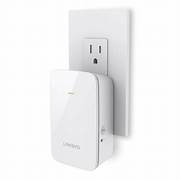Introduction
Home Assistant is a powerful open-source home automation platform that empowers users to control and automate smart devices, services, and platforms.
While Home Assistant offers a vast array of integrations out-of-the-box, there are times when you may want to extend its functionality by creating custom components.
In this guide, we’ll walk you through the process of developing custom components for Home Assistant, allowing you to integrate new devices, services, or platforms seamlessly into your smart home setup.
Understanding Home Assistant Architecture
Before diving into custom component development, it’s essential to understand the architecture and structure of Home Assistant.
Home Assistant is built on Python and uses YAML configuration files to define entities, automations, and integrations.
Familiarize yourself with the core components of Home Assistant, including the entity registry, service calls, and event handling.
Identifying the Integration Type:
The first step in custom component development is identifying the type of integration you want to create.
This could be integration for a specific device (e.g., smart thermostat, light bulb), a service (e.g., weather data provider, online API), or a platform (e.g., messaging service, media player).
Choose an integration type that aligns with your needs and interests.
When embarking on custom component development for Home Assistant, the initial step is to identify the integration type that aligns with your objectives and interests.
This involves categorizing the desired functionality into specific device, service, or platform types.
#1 Device Integration:
Device integrations focus on incorporating the capabilities of physical devices into the Home Assistant ecosystem.
Examples include smart thermostats, light bulbs, sensors, and switches. Developers interested in enhancing their smart home with new devices can choose this integration type to expand compatibility and control options.
#2 Service Integration:
Service integrations involve connecting Home Assistant with external services or APIs to access additional features or data.
This category encompasses a wide range of services, such as weather data providers, online APIs for home automation platforms, and data analytics services.
By integrating services, users can augment their smart home with enhanced functionality and information retrieval capabilities.
#3 Platform Integration:
Platform integrations focus on incorporating entire platforms or ecosystems into Home Assistant, enabling seamless interaction with a variety of devices and services within a unified environment.
Examples include messaging services like Slack or Telegram, media player platforms like Spotify or Plex, and home automation platforms like SmartThings or Hubitat.
Platform integrations offer users the ability to centralize control and management of disparate devices and services, streamlining the smart home experience.
Creating the Custom Component Python Code:
Once you’ve identified the integration type, it’s time to start writing the Python code for your custom component.
This code will define the behavior and capabilities of the integration within Home Assistant. You’ll need to implement functionality for discovering devices, reading sensor data, controlling devices, and handling events.
Take advantage of Home Assistant’s extensive Python libraries and documentation to streamline the development process.
Defining Configuration Options:
Next, define configuration options for your custom component using Home Assistant’s YAML configuration format.
These options allow users to customize the behavior of the component, such as specifying device names, API keys, or connection settings.
Document these configuration options clearly to guide users through the setup process.
Testing and Debugging:
Testing is a critical step in custom component development. Set up a development environment to test your custom component and ensure it works as expected.
Use Home Assistant’s logging and debugging features to troubleshoot any issues and verify that the component integrates seamlessly with the rest of the system.
Documenting the Component:
Provide comprehensive documentation for your custom component, including installation instructions, configuration options, and usage examples.
Clear and concise documentation is essential for helping users understand how to install and configure the component in their Home Assistant instance.
Consider including code samples and diagrams to illustrate key concepts.
Contributing to the Community:
Finally, consider sharing your custom component with the Home Assistant community.
You can contribute your component to the official Home Assistant GitHub repository or publish it on platforms like HACS (Home Assistant Community Store) for others to discover and use.
By contributing to the community, you’ll help enrich the Home Assistant ecosystem and empower fellow users to create personalized smart home solutions.
Conclusion:
Custom component development opens up a world of possibilities for extending the functionality of Home Assistant.
Whether you’re integrating new devices, services, or platforms, custom components allow you to tailor your smart home setup to meet your unique needs.
By following the steps outlined in this guide, you’ll be well-equipped to develop custom components and contribute to the thriving Home Assistant community.












